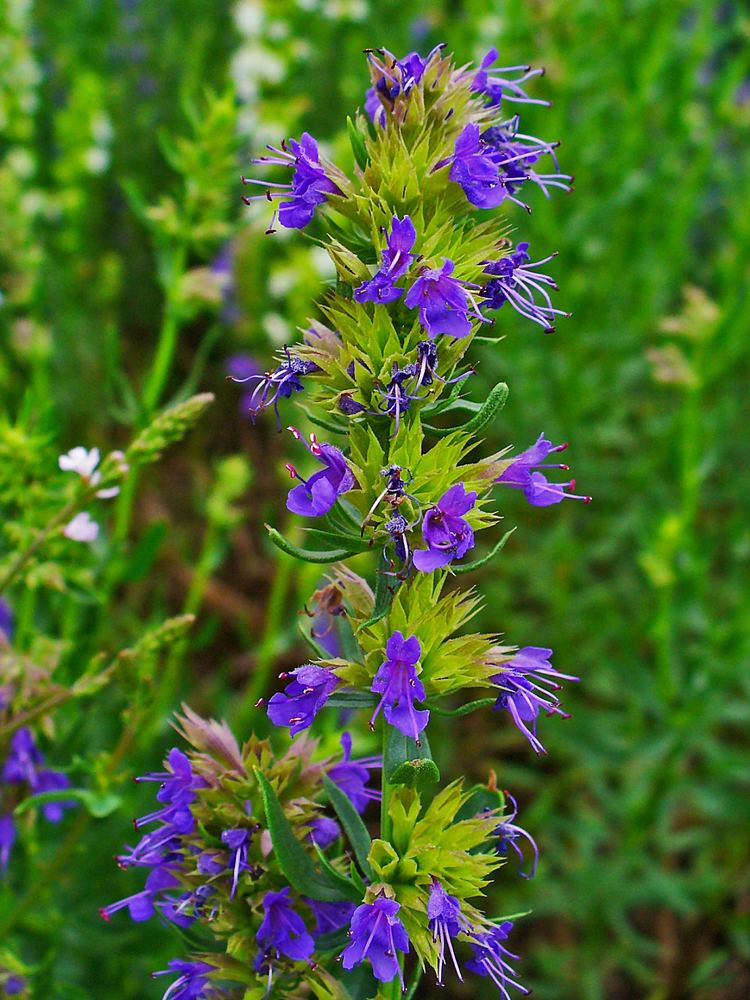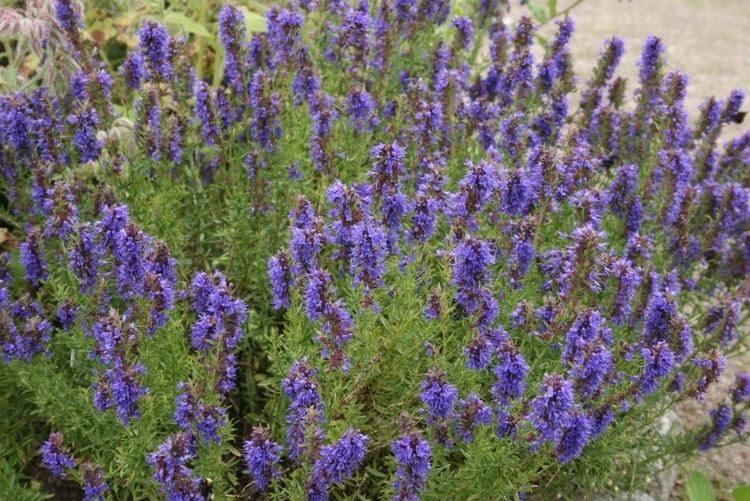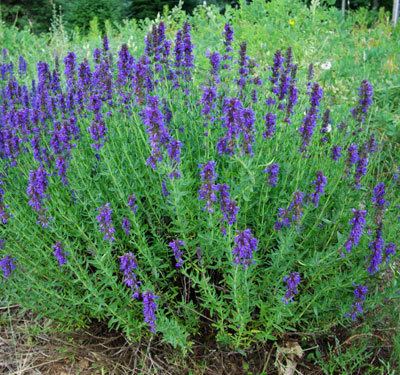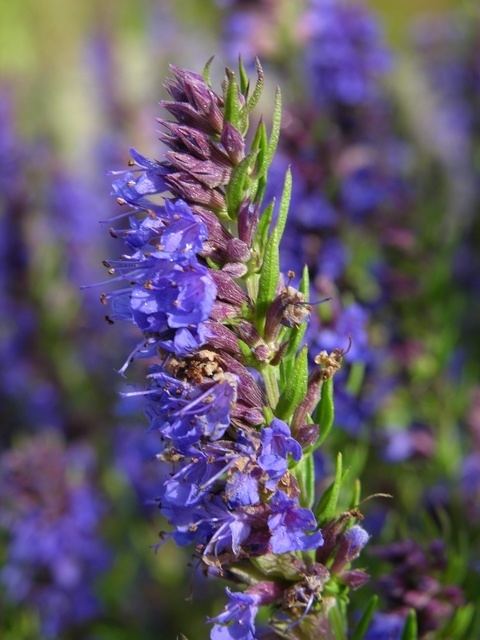Scientific name Hyssopus Higher classification Nepetoídeae | Rank Genus | |
Similar Hyssop, Lemon balm, Lovage, Norwegian angelica, Common wormwood | ||
Hyssopus (Hyssop) is a genus of herbaceous or semi-woody plants in the family Lamiaceae, native from the east Mediterranean to central Asia as far east as Mongolia. They are aromatic, with erect branched stems up to 60 cm long covered with fine hairs at the tips. The leaves are narrow oblong, 2–5 cm long. The small blue flowers are borne on the upper part of the branches during summer. By far the best-known species is the Herb Hyssop (H. officinalis), widely cultivated outside its native area in the Mediterranean.

Note that anise hyssop, Agastache foeniculum (also called blue giant hyssop), is a very different plant, although both are in the mint family. Anise hyssop is native to much of north-central and northern North America.

- Hyssopus ambiguus (Trautv.) Iljin ex Prochorov. & Lebel - Altai Republic of Russia, Kazakhstan
- Hyssopus cuspidatus Boriss. - Altai Republic, Kazakhstan, Xinjiang, Mongolia
- Hyssopus latilabiatus C.Y.Wu & H.W.Li - Xinjiang
- Hyssopus macranthus Boriss. - Altai Republic of Russia, Western Siberia, Kazakhstan
- Hyssopus officinalis L. - central + southern Europe, Algeria, Morocco, east to Iran
- Hyssopus seravschanicus (Dub.) Pazij - Afghanistan, Pakistan, Kyrgyzstan, Tajikistan

History

The name hyssop can be traced back almost unchanged through the Greek ύσσωπος (hyssopos). The name hyssop appears in some translations of the Bible, but researchers have suggested that the Biblical accounts refer not to the plant currently known as hyssop but rather to one of a number of different herbs. The Septuagint translates the name as ὕσσωπος hyssop, and English translations of the Bible often follow this rendering. The Hebrew word אזוב (esov or esob) and the Greek word ὕσσωπος probably share a common (unknown) origin. The biblical plant is discussed further at ezov.

